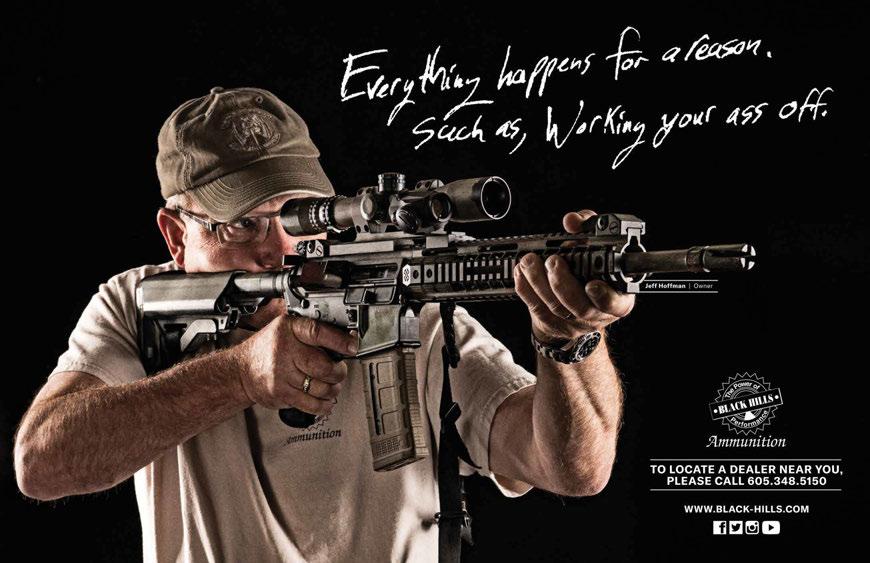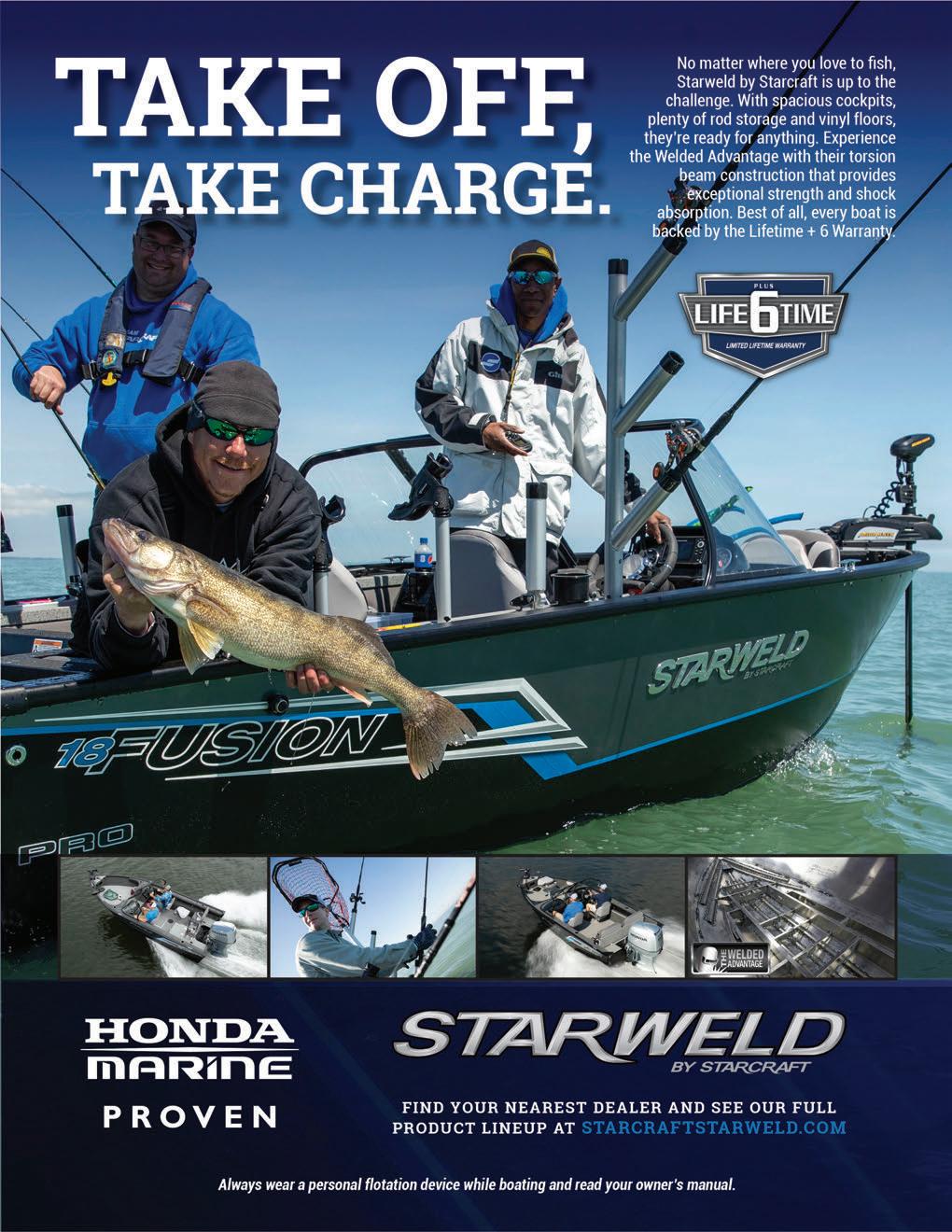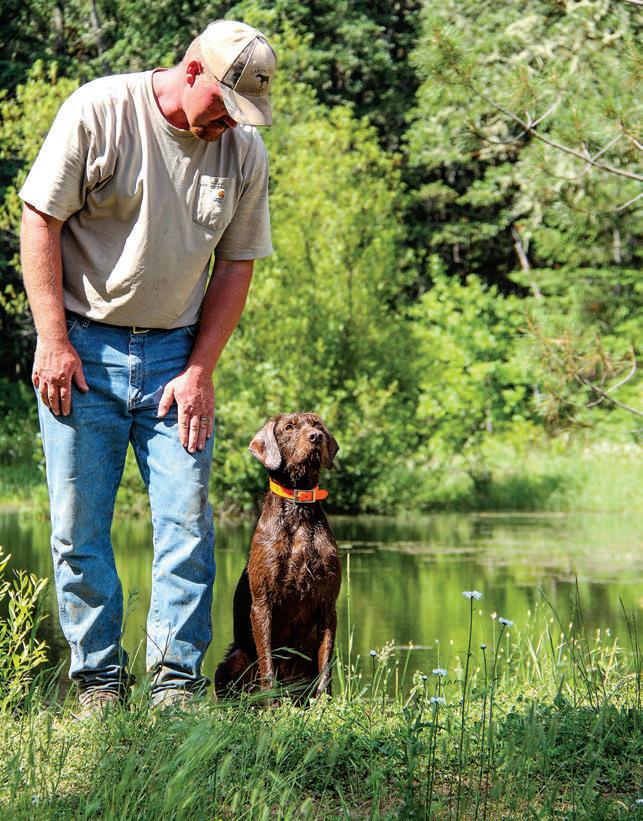
4 minute read
More offseason training tips for
OFF-SEASON TUNE UPS, PART II: COMMUNICATION, CONDITIONING AND BREAKING
By Scott Haugen I n last month’s Gun Dog column we looked at how to train your dog to push back on blind retrieves. This month we’re going to look at more offseason training tips, and once again we’re turning to noted professional trainer Jesse Spradley.
“This is a great time of year to do a refresher on everything,” begins the owner of Cabin Creek Gun Dogs (541- 219-2526, cabincreekgundogs.com) in Lakeview, Oregon. “An important part of dog training is communication; that is, making sure the dog understands what’s being expected by you, and that you’re clearly and consistently communicating that.”
One thing I do that helps strengthen communication with my dogs when training is to never wear sunglasses. You’ve already developed a strong bond with your dog, so you’ve likely noticed they will do anything to please you. In fact, their drive to please you is so strong, I’m a firm believer they try to read minds. One way dogs feed their need to please you is through eye contact. They can often tell by the look in your eyes what you’re thinking, how you feel and what you’re going to do or say next.
To enhance communication skills, try concentrating on eye contact and what messages you’re sending to your dog while training.
Eye contact and clear communication are essential when training in order for your dog to learn what’s expected. Here, professional trainer Jess Spradley works with Captain, his prized male pudelpointer. (SCOTT HAUGEN)
Spring is the time to correct any bad habits your dog may have picked up during hunting season, as they’re in good shape and eager to be afield. (SCOTT HAUGEN)
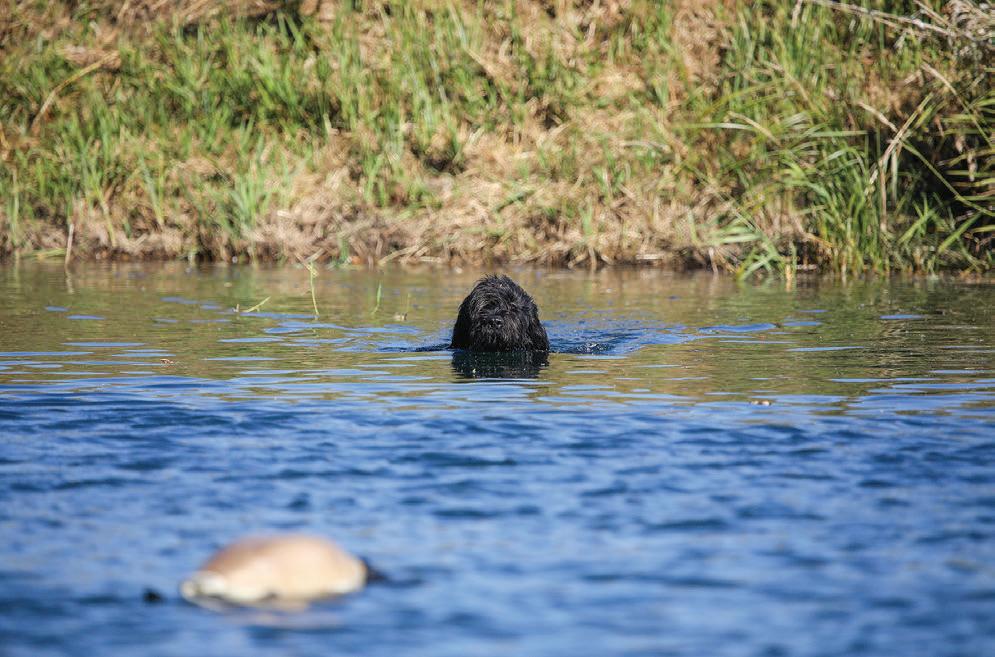
potato in the offseason.
“This time of year your dog should be in great condition, so maintain that. Be sure and get out every day with your dog, working on both training and conditioning,” he says.
As temperatures begin to warm up, Spradley suggests running your dogs early in the day.
“Once daytime temperatures start getting into the 80s, I’ll run my dogs in the morning for at least an hour, three times a week. Not only will this keep them in shape, it’ll keep their pads tough too,” he says.
“If early morning and evening training sessions don’t fit into your schedule, condition your dog in the water,” continues Spradley. “Hop in a canoe or kayak and have your dog swim beside you, or head out on a paddle board. Water training is a great, low-impact workout for all dogs, especially aging, arthritic dogs.” My wife loves swimming in the summer, and our dogs swim with her a lot. They’ll often swim in lakes, covering surprising distances and getting far from shore.
This is fun for the dogs and is a great workout.
“THIS IS ALSO a good time to work out any kinks you encountered during hunting season,” encourages Spradley. “One of the biggest reasons people bring their dogs back to me to train this time of year is to keep them from breaking on the shot. This is something you can fix, on your own, and the process further strengthens the bond between you and your dog.” “A dog often breaks when multiple shots are fired from the blind or when multiple birds fall,” notes Spradley. “They’re simply confused with all that’s happening, so to fix this, take a step-by-step approach.
“First, head to a duck blind you can train and shoot from with a dead bird in hand, like a training pigeon or starling, or maybe a duck skin you saved from the season that’s secured to a bumper. With your dog watching, and sitting, toss it out, commanding the dog to stay. Don’t let the dog fetch until you release it. Repeat this a couple times, then toss it out and fire a shot from your shotgun, keeping the dog by your side until released. Make sure the dog retrieves the bird to hand.
I struggled to polish the first step of this training process with one of my

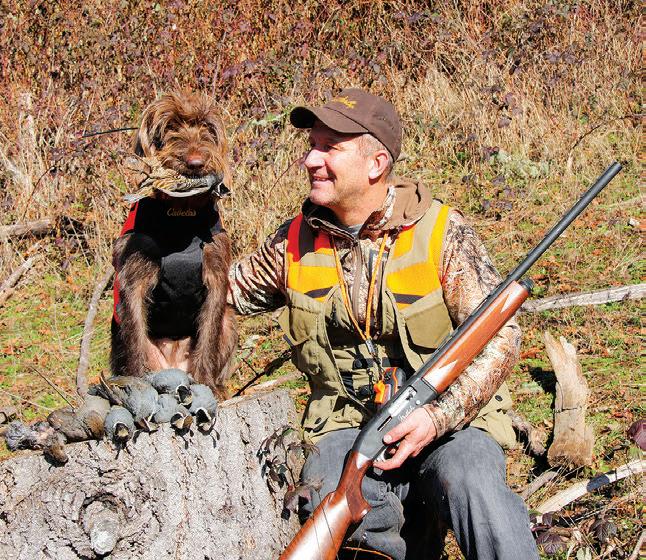
The next hunting season is still months and months away and to enjoy it to its fullest, now is the time to brush up on your dog’s training and correct any behavioral glitches that may have popped up this past season. (SCOTT HAUGEN)
dogs that started breaking too quickly, so I had my son help me. He tossed out the dummy and fired a shot from 30 yards away while I managed the dog. In a few training sessions the problem was fixed.
If you’re unsure of what to do in any training process, see a trainer, as you don’t want to engrain bad habits into your dog. Whatever training you’re doing this offseason, be sure to make it positive for the dog, and keep it fun for both of you. CS
Editor’s note: To watch Scott Haugen’s series of puppy training videos, visit scotthaugen .com. Follow Scott on Instagram and Facebook.
